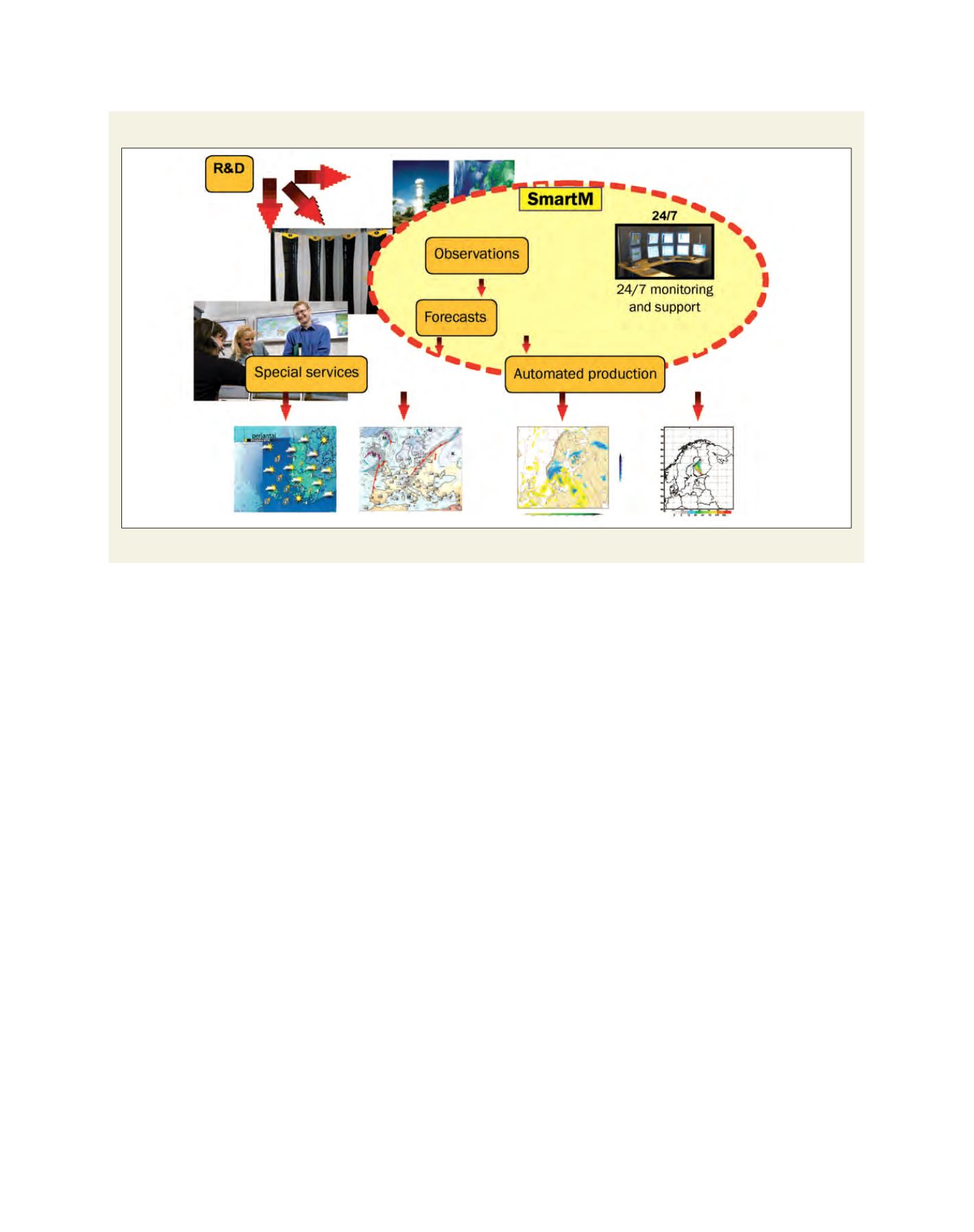

[
] 261
A
dAptAtion
And
M
itigAtion
S
trAtegieS
storage, computer resources, numerical weather predic-
tion models and their runs, other operational models (sea,
hydrology, air quality, dispersion of hazardous materi-
als, drifting models), manual to semi-automatic analysis
of the observations and model output, final production
of the tailor-made products to various customer groups
and finally distribution of the products. Distribution of
weather service products to the customer may take place
via the Internet, extranets, mobile telecommunications,
media, phone, fax or satellites.
It is a fair estimate that the full economic benefit of a
hydro-meteorological service organization increases with
the growing number of customer sectors and needs served
through the products. Typically, the spectrum of available
products is greater in developed countries than in those
that are less developed. Also, the fewer products a national
hydro-meteorological service (NHMS) is able to produce,
the less interest there is in allocating financial resources
to the NHMS in a country. Because of this, many develop-
ing countries are facing problems. Due to lack of adequate
financial resources the observing and telecommunication
systems, service capabilities, quality and quantity of opera-
tional staff, and general operational ability of an NHMS
may be considerably restricted. Proper financial resources
are essential to a NHMS’s ability to serve all sectors where
weather has a substantial impact. This has also a major
impact on the quality of the services provided.
In some countries, NHMSs are properly resourced
and are able to satisfy the needs of a wide range of
service sectors. Because of these high levels of satisfac-
December 2009. Financing adaptation to climate change is crucial
to minimizing costs in the long-term.
Natural disaster early warning systems
The sensitivity of human and economic activities to weather
phenomena has increased considerably in the past few decades. This
is due to the growth of the world population, human migration, the
expansion of economic activities into more weather sensitive areas
(especially coastal zones), the more technical nature of economic
activities and, in some instances, climate change.
The vast majority of the disasters are caused, or closely related to,
weather phenomena such as: storms; drought; flooding; heat waves;
cold spells; ice and snow storms; land slides.
The World Bank and the World Meteorological Organization (WMO)
have estimated that modern and well functioning weather services may
lead to considerable savings. Typically, the funding allocated to weather
services should lead to savingswhere the return on investment ismanifold.
In Finland, for example, the annual budget of the Finnish Meteorological
Institute in 2007was about EUR50million, of which about EUR30million
was related to weather services. The Technical Research Centre of Finland
conducted a survey that year to estimate the economic benefit of the FMI
weather services on various sectors. According to this study, an economic
benefit of at least EUR239-300 million annually may be gained in various
sectors. These figures do not include the benefits of radiation safety serv-
ices, climate services or air quality services.
A well functioning weather service needs relevant research and
development investment and usually consists of weather observa-
tion networks (ground-based in situ and remote sensing, soundings,
radars, aircraft and ship observations, and satellites), adequate
telecommunication systems, databases for observation and product
FMI production system/value chain
An example of an operational meteorological service flow chart
Source: FMI presentation material, 2009
















